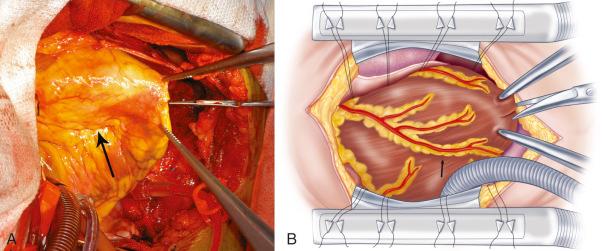Physical Address
304 North Cardinal St.
Dorchester Center, MA 02124
Amelioration of left ventricular (LV) remodeling is an appealing target for medical and surgical therapies for heart failure. Remodeling is a complex process that leads to maladaptive ventricular dilation, hypertrophy, and altered ventricular wall stress and may occur after large myocardial infarction, chronic ischemia, or chronic valvular heart disease.
The most distinct sequela of remodeling is aneurysm formation at the site of infarction. Transmural infarcts result in full-thickness necrosis and scar formation, with subsequent thinning and infarct expansion secondary to mechanical stretch. Nontransmural infarcts alter regional compliance resulting in infarct area bulging and expansion. The net result is formation of a ventricular aneurysm and increased LV volume.
Consequently, surgical ventricular reconstruction (SVR) primarily involves aneurysmectomy and LV volume reduction. These operations are almost always done concomitantly with coronary artery bypass grafting or mitral valve surgery.
LV aneurysms occur at the site of infarction, most frequently anterior apical (90%) after left anterior descending (LAD) and posterior (10%) after circumflex (Cx) infarcts.
Important anatomic considerations are the location of major coronary arteries, such as the LAD and Cx relative to the proposed ventriculotomy ( Fig. 30.1 ; arrow indicates LAD).

Become a Clinical Tree membership for Full access and enjoy Unlimited articles
If you are a member. Log in here